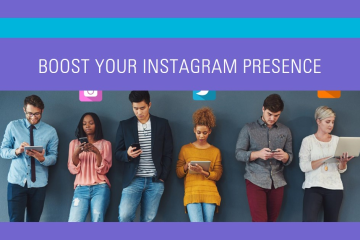Creating engaging social media posts starts with a deep understanding of your target audience. By knowing who you’re talking to, you can tailor your content to their interests, preferences, and behaviors, increasing the likelihood of engagement and retention.
Conducting Audience Research
To truly understand your audience, you need to conduct thorough research. Here are some effective methods:
| Research Method | Benefits |
| Surveys | Direct feedback from your audience |
| Social Media Analytics | Insights on engagement and demographics |
| Customer Interviews | In-depth understanding of pain points and preferences |
| Competitor Analysis | Insights on industry trends and audience expectations |
| Social Listening | Real-time feedback and trending topics |
Each of these methods provides unique insights that can help shape your social media strategy.
Creating Audience Personas
Once you’ve gathered data, create audience personas to represent your typical followers. These fictional characters embody the characteristics, goals, and behaviors of your target audience.
Key elements to include in your personas:
- Demographics (age, gender, location)
- Job title and income
- Goals and challenges
- Preferred social media platforms
- Content consumption habits
- Buying behaviors
Example Persona:
“Sarah, 28, is a marketing manager in a tech startup. She’s active on LinkedIn and Twitter, always looking for industry insights and networking opportunities. Sarah values concise, data-driven content that she can apply to her work.”
By creating detailed personas, you can craft content that resonates with your audience on a personal level.
Crafting Engaging Content
With a clear understanding of your audience, it’s time to create content that captivates and retains their attention.
The Power of Storytelling
Storytelling is a powerful tool for creating emotional connections with your audience. By weaving narratives into your posts, you make your content more relatable and memorable.
Effective storytelling techniques:
- Use a clear structure (beginning, middle, end)
- Create relatable characters or scenarios
- Evoke emotions through descriptive language
- Tie the story back to your brand or message
Example: Instead of simply promoting a product, share a customer success story that highlights how your product solved a real problem.
Utilizing Visuals
Visual content is crucial for capturing attention in crowded social media feeds. Different types of visuals can significantly impact engagement:
- Images: Eye-catching photos or graphics can stop scrollers in their tracks
- Videos: Short-form videos are highly engaging and shareable
- Infographics: Great for presenting complex information in a digestible format
- GIFs: Add humor and personality to your posts
- Memes: Can increase relatability and shareability when used appropriately
Remember to optimize your visuals for each platform’s specifications to ensure they display correctly.
Writing Compelling Captions
Your caption is where you provide context, tell your story, and encourage engagement. Here’s a table of do’s and don’ts for writing effective captions:
| Do | Don’t |
| Keep it concise and relevant | Write overly long paragraphs |
| Use a conversational tone | Use too much jargon or formal language |
| Include a clear call-to-action | Forget to prompt engagement |
| Use emojis strategically | Overuse emojis or hashtags |
| Ask questions to encourage comments | Make it all about self-promotion |
For those struggling with caption writing, AI tools can provide inspiration and assistance. The Jadve social media post generator is one such tool that can help create engaging captions tailored to your brand voice and audience preferences.
Optimizing for Each Platform
Each social media platform has its own unique features and user behaviors. Tailoring your content to each platform can significantly boost engagement.
Facebook Strategies
Facebook offers a diverse range of content formats and a wide audience demographic. Best practices for Facebook include:
- Use a mix of content types (text, images, videos, live streams)
- Encourage discussions in comments
- Utilize Facebook Groups to build community
- Take advantage of Facebook Stories for time-sensitive content
- Optimize video content for silent viewing (captions)
Instagram Strategies
Instagram is a highly visual platform that rewards creativity and authenticity. Here are some tips for Instagram success:
| Aspect | Tips |
| Captions | Use storytelling, ask questions, include calls-to-action |
| Hashtags | Research and use relevant hashtags (up to 30 per post) |
| Visuals | Maintain a consistent aesthetic, use high-quality images |
| Stories | Use interactive features like polls and questions |
| Reels | Create short, engaging video content |
Twitter Strategies
Twitter’s fast-paced environment requires a different approach:
- Keep tweets concise and punchy
- Use hashtags strategically (1-2 per tweet)
- Engage in trending conversations
- Share a mix of original and curated content
- Use Twitter threads for longer form content
- Leverage Twitter Spaces for audio engagement
LinkedIn Strategies
For professional networking and B2B marketing, LinkedIn offers unique opportunities:
- Share industry insights and thought leadership content
- Use a professional yet conversational tone
- Engage with comments and participate in discussions
- Share company culture and employee spotlights
- Utilize LinkedIn articles for long-form content
- Participate in relevant LinkedIn groups
Timing and Frequency of Posts
The timing and frequency of your posts can significantly impact engagement levels.
Finding the Best Times to Post
While the best times to post can vary based on your specific audience, here’s a general guide:
| Platform | Best Times to Post |
| Weekdays 1-4 PM | |
| Monday, Wednesday, Friday 11 AM-2 PM | |
| Weekdays 8 AM-4 PM | |
| Tuesday-Thursday 9 AM-12 PM |
Remember, these are general guidelines. Use your platform analytics to determine the best times for your specific audience.
Maintaining a Consistent Posting Schedule
Consistency is key to maintaining audience engagement. Tools that can help manage your posting schedule include:
- Hootsuite
- Buffer
- Sprout Social
- Later
- CoSchedule
These tools allow you to plan and schedule your content in advance, ensuring a consistent presence across platforms.
Engaging with Your Audience
Engagement doesn’t stop at posting content. Actively interacting with your audience is crucial for building a loyal community.
Responding to Comments and Messages
Best practices for engaging with your audience:
- Respond promptly to comments and messages
- Use a friendly, personalized tone
- Address concerns or complaints professionally
- Encourage further discussion with follow-up questions
- Show appreciation for positive feedback
Encouraging User-Generated Content
User-generated content (UGC) can significantly boost engagement and authenticity. Here are some ideas for UGC campaigns:
| Campaign Type | Description |
| Photo Contests | Ask users to share photos related to your brand |
| Hashtag Challenges | Create a unique hashtag for users to participate in a challenge |
| Customer Reviews | Encourage customers to share their experiences |
| Q&A Sessions | Host live Q&A sessions where users can ask questions |
| Behind-the-Scenes | Invite users to share their own behind-the-scenes content |
Analyzing and Improving Engagement
To continuously improve your social media strategy, you need to regularly analyze your performance and make data-driven decisions.
Using Analytics Tools
Key metrics to monitor include:
- Engagement rate (likes, comments, shares)
- Reach and impressions
- Click-through rate
- Follower growth
- Conversion rate
Most social media platforms offer built-in analytics tools, but third-party tools like Sprout Social or Hootsuite can provide more in-depth insights.
A/B Testing Posts
A/B testing involves comparing two versions of a post to see which performs better. Here’s a simple process:
- Choose one element to test (e.g., caption, image, posting time)
- Create two versions of the post, changing only the chosen element
- Post both versions at similar times on different days
- Analyze the performance of each post
- Use the insights to inform future content decisions
Adjusting Your Strategy
Tips for ongoing improvement:
- Regularly review your analytics to identify trends
- Stay updated on platform algorithm changes
- Be willing to experiment with new content types or strategies
- Listen to your audience’s feedback
- Keep an eye on competitors and industry trends
By continuously refining your approach based on data and feedback, you can create a social media strategy that consistently engages and retains your audience.
Remember, engaging social media content is about understanding your audience, crafting compelling messages, and fostering genuine interactions. By applying these strategies and consistently analyzing your performance, you can create a vibrant and engaged social media community around your brand.



